The mind of a Neocon
Psycho-Realism - blending modern psychology with International Relations
Introduction
The aficionados of geopolitics are usually not all that familiar with cutting edge research in neuroscience, psychology or anthropology. Yet these disciplines can greatly contribute to our understanding of it as I shall elucidate in the following.
US foreign policy has significantly shaped the world order since the end of WWII. The policy in turn has been shaped by the Neocon culture.
For those unfamiliar with the term, Neocons (Neoconservatives) subscribe to an ideology marked by supremacy, an ostensibly free market capitalism and extremely jingoistic, interventionist foreign policy. Recently, the term Neolib has appeared, designating virtually the same kind of philosophy. These are the Madeleine Albrights, the John Boltons, Lindsey Grahams, Mitch McConnells, Mike Pompeos of this world and, at the time of this writing, seemingly the entire Biden administration.
In this article, I lay out the groundwork by venturing into the realm of psychology. I then erect a bridge to the field of anthropology, sketching out the archetype of a Neocon. Finally, I tie this psychometric model to the geopolitical school of Realism, resulting in what I call Psycho-Realism - an extended model with superior predictive power.
If you care not about the scientific basis for the argument, feel free to skip directly to the section ‘The Neocon’.
Determinism and Personality
The field of psychology has long been plagued by foggy conclusions and faulty application of statistics. It was seemingly at the epicenter of the replication crisis of the early 2000s. To be fair, psychology deals in multidimensional, highly correlated and unexpectedly subtle matters, whose ramifications have only started getting unraveled in recent decades.
In response to the replication crisis, psychology has undergone a significant evolution. It now prioritizes the elimination of unintended influences and biases, while also enhancing the rigor of its mathematical and statistical methodologies. This refined approach is what I refer to as 'modern psychology' in the subtitle above.
A cornerstone of modern psychology, akin to the very successful standard model in physics, are the so-called big five personality traits. This five-dimensional scientific model endeavors to generalize and categorize human personalities. The five dimensions in question are:
Conscientiousness (efficient/organized vs. extravagant/careless)
Agreeableness (friendly/compassionate vs. critical/rational)
Neuroticism (sensitive/nervous vs. resilient/confident)
Openness to experience (inventive/curious vs. consistent/cautious)
Extraversion (outgoing/energetic vs. solitary/reserved)
Naturally, every dimension offers a spectrum between two extremes. If we brake it down to each of the 2 extremes, this opens up a selection of 2⁵=32 distinct personalities.
You may be familiar with the simplified, older form of this, the Briggs-Meyers personality model. This has been popularized by free online tools like 16personalities. The Briggs-Meyers model, being one dimension short of the Big Five, proposes 2⁴ = 16 distinct personality types, trading in predictive power for less complexity.
There are many reasons why the big five became so foundational to modern psychology. They include the simplicity of the model, its cross-cultural relevance as well as the massive empirical support for it. But perhaps the most intriguing aspect, and the focus of our discussion here, is its remarkable intersection with other disciplines like neuroscience, biology and anthropology, some of which I will glance over here.
Hereditary Traits, hereditary values ?
One of the most thrilling findings in personality research is the whole issue of heritability. As it happens so often in the history of science, here too it turns out that nature does not comport according to our values. Thus, many if not most of the traits that lead to different types of success turn out to be hereditary. I will briefly sketch out how this works for personality and free will, then tie it back to the Neocon in the next section.
It's now widely acknowledged, even in mainstream discourse, that IQ, or 'g' for general intelligence, is predominantly heritable. This conclusion is backed by numerous genetics and twin studies. The essence of these findings can be summarized as follows: Being born with a high IQ is akin to inheriting a particular eye or skin color – it's just not something one can take credit for in any meaningful way.
Now you may think that IQ is nice to have, but it does not really measure intelligence, does it? Why is that important?
Whatever IQ measures, it is undoubtedly in the vicinity of a general notion of intelligence, in both the colloquial and academic sense. But most relevant here, IQ is known to be among the strongest predictors of economic success.
Alongside IQ, conscientiousness, one of the big five traits, shares the podium as one of the strongest predictors of economic or career success. This makes immediate sense: the harder you tend to work, the more organized and diligent you are, the higher the economic and career outcomes.
Now this one is a bombshell, or at least, it should be: As it turns out, personality too is mostly inherited, even partly genetically determined. That holds true for all five traits of personality, including conscientiousness.
You know all those self-help books and the Jordan Petersons out there? The people preaching to get your life together by being more disciplined and having more grit?
That would be a noble endeavor were it not for the small obstacle that advocating for improving grit by means of willpower and habits is like advocating for increasing your body height by means of willpower and habits, in order to be more successful at, say, basketball: you can only get so far from the firm anchor of your inheritance.
Now, onto the mandatory caveat: hereditary or deterministic traits do not imply immutable traits. Recent developments in self-help literature are increasingly focusing on meta-level transformations, such as habit modification. This shift acknowledges that one cannot put the carriage before the horse, that willpower cannot be simply conjured up by force of will.
I do not dispute the potential benefits of self-help resources; they are likely a force for good. The point is rather about values: If we aspire to meritocracy as a core value of society, we need to face reality:
Individuals endowed with higher levels of conscientiousness gravitate more towards self-help literature, gain more from it, and thus propel themselves even further ahead of their counterparts with no such endowment - through no merit of their own, even if they did work hard to get there.
The debunking of willing oneself to more grit brings us to the topic of free will, a quagmire if there ever was one. Free will is foundational in many cultures, underpinning concepts such as personal identity, responsibility, guilt, and achievement.
The contemporary, scientific version of the debate around free will was sparked by a series of carefully constructed experiments, starting with the seminal 1983 Libet papers which examine the issue of free will through the lens of neuroscience. From the original Libet to modern fMRI experiments, the results converge: There is no nook and cranny through which we could avoid scientific determinism and smuggle in free will. Determinism here is meant in the scientific way, not the philosophical way - that is, from elementary particles to macro phenomena, the universe is governed by natural laws, with no magic or paranormal activities.
If this is the first time you are confronted with the idea of no free will, you are undoubtedly skeptical at this point. I recommend Stanford’s Robert Sapolsky’s book ‘Determined’, a masterful rabbit-hole worth its every page. In it, Sapolsky lays out the scientific evidence, links it up with the much older philosophical debate and contends with all flavors of criticism, from compatibilists like Daniel Denett to scientific articles attempting to rebuke the findings.
To put this in a historic context: After we lost the notion that we are ruled by the king because he was chosen by God; After we were disillusioned of the notion that noble blood made the aristocracy superior; After we came to realize that people did not earn their smarts, but were born with them, we now learn that even those that work hard for their success cannot take credit for their grit. So how can we celebrate our successful people?
We cannot. At least, not in good faith. We need to reorient our values as a society. Just like the heliocentric worldview pushed us away from the center and taught humanity a lesson in humility, so too should the lack of free will make us more humble about success.
The realization of no free will frees us from the burden of being resentful, harboring a burning desire for revenge or hatred; It pushes punitive measures out of the domain of ethics and purely into the realm of incentives. Wonderful, with no more space for hatred, we can now live happily ever after, right?
Conservative vs. Liberal
But how do personality and free will relate to Neocons? While most human cultures rely to some degree on the concepts of personal responsibility and agency, they lie at the epicenter of virtually all conservative values, including Neconservative thinking. And these concepts in turn build on the canonical notion of free will, a concept dispelled by science.
But what do we mean by ‘conservative values’? There are further aspects to personality inn modern psychology that can be layered on top of the big five, albeit with a stark overlap between the two. Let us call these ‘value types’, as opposed to the previously encountered ‘personality types’. I will elucidate some of the profound relations between personality and value types in the next section.
Star psychologist Jonathan Haidt and colleagues distinguish between two major value types they dub ‘conservatives’ and ‘liberals’.
They propose that morality can be decomposed into five dimensions:
Harm/care
Fairness/reciprocity
Ingroup/loyalty
Authority/respect
Purity/sanctity
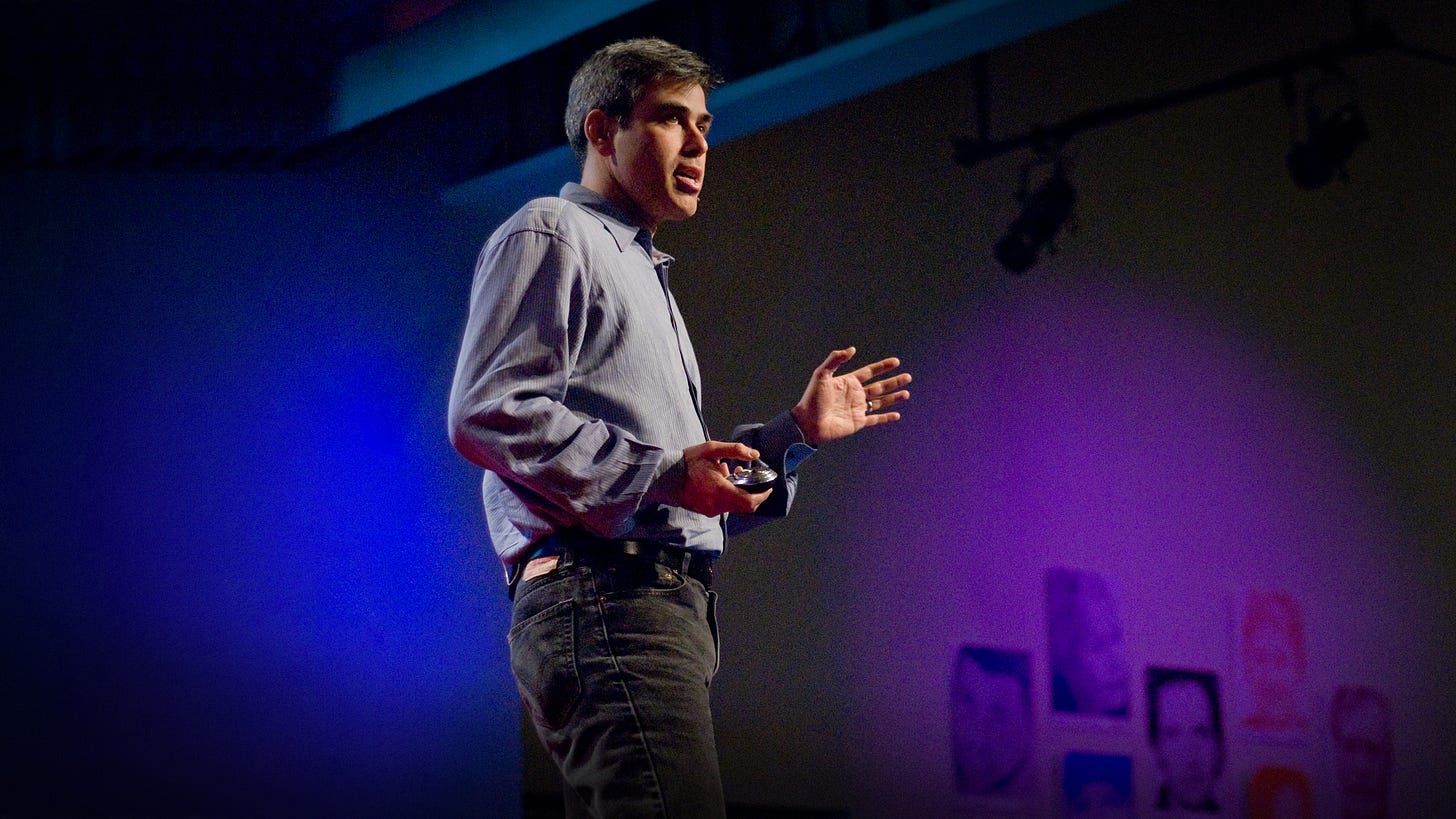
By means of a series of carefully designed studies, Haidt et al. then proceed to demonstrate that while conservatives rely roughly equally on all five of the above, liberals are more lopsided on the first two, that is Harm and Fairness.
The implications of Haidt's findings are vast, resonating through countless political debates and culture wars throughout history. They also have significant repercussions for our morality and the judicial system.
For the sake of brevity, let's focus on one critical aspect of this moral schism between liberals and conservatives, namely the fact that the first two moral foundations, Harm and Fairness, are universal, while the latter three are group binding.
Specifically, the value Loyalty requires the demarcation of an ingroup which to be loyal to, as opposed to an outgroup which does not enjoy that privilege. Similarly, Respect requires the designation of a specific authority to honor, which in turn also demarcates an ingroup that subscribes to that authority, opposing the remaining outgroup. The same can be applied to the set of rules defining Purity: is it ok to burp after a meal, to consume pork or shrimp, etc.
If these indeed form the basis of an individual’s morality, then the latter three values can thus accurately be regarded as the root of tribalism, provincialism and thus conflict. In other words, and in Haidt and colleagues’ terminology, liberal values are universal, while conservative values necessarily entail a distinctive treatment of the ingroup and outgroup.
Furthermore, when confronted with a moral dilemma, conservatives might encounter internal contradictions due to their value system. For instance, if the choice arises between treating a member of the outgroup fairly, that is, treating them just like a member of the ingroup, or demonstrating Loyalty by giving preferential treatment to the ingroup member, which value should a conservative prioritize? Fairness or Loyalty? This dilemma takes on an important dimension for example in court or political decisions.
Virtually every civilization has stumbled upon one version or another of the Golden Rule - Treat others as you would like others to treat you. This is nothing other than the statement that ethics ought to be universal, applying to everyone equally. One can therefore argue that the values of Fairness and Harm, on which the Golden Rule rests, are not just universal in that they apply to everyone equally, but also universally recognized by humanity at different stages and localities.
Fairness and Harm are so fundamental in fact, that they can be observed in toddlers and even traced back all the way to our distant cousins, capuchin monkeys.
In recent years, humanism, a secular, science based version of ethics rooted in the values of the Enlightenment has gained traction through the writings of Stephen Pinker, Sam Harris, Richard Dawkins and others. Not only does humanism rely solely on the values of Harm and Fairness, but it outright rejects Loyalty, Authority and Purity as detrimental to the wellbeing of society.
Conservatives, Honor and Reputation
If you would bear with me for one last detour into science, there is but one last piece we need to complete the picture. Thus far, we glanced over personality, we covered value types and their ramifications with morality. In this section, I will explain the origins of the different value types.
It is May 1996. The air is brimming with the fresh vigor of spring as a student, let’s call him 'Alex’, walks toward a designated room. He enrolled in a study, organized by professor Nisbett. As he traverses the hallway, Alex is bumped by another student who then turns around, musters Alex and exclaims ‘asshole!’ before moving on.
Alex is just one of dozens of participants, all of whom were oblivious to the fact that the bumping in the hallway was part of the experimental design.
The design differentiates between participants from the North and those from the South of the US and their respective cultures. The abstract sums up the results succinctly:
Compared with northerners--who were relatively unaffected by the insult--southerners were (a) more likely to think their masculine reputation was threatened
(b) more upset (as shown by a rise in cortisol levels)
(c) more physiologically primed for aggression (as shown by a rise in testosterone levels)
(d) more cognitively primed for aggression,
(e) more likely to engage in aggressive and dominant behavior.
Findings highlight the insult-aggression cycle in cultures of honor, in which insults diminish a man's reputation and he tries to restore his status by aggressive or violent behavior.
This and subsequent studies underscore the significant influence of culture on the expression of personality and value types and vice versa. To clarify, the expressed admixture of individual value types in a group of people results in behaviors, customs and a sort of coalesced morality of the group - the group’s culture.
It’s worth noting that this finding does not contradict the earlier assertion that personality traits are largely hereditary. Nature and nurture interact with one another in complex ways and over both individual lifespans and generations. Some of the underlying mechanisms for this interaction are only starting to get unraveled, like epigenetics, early childhood brain wiring, and so on.
When multiple disciplines converge on a similar conclusion, it usually indicates the formation of a robust theory. Anthropology, for instance, provides further insight into cultures of honor. Numerous works, such as those by Samuel Bowles and Raymond Kelly, but in particular the epic, 3000 page long ‘Cross Cultural Summary’ by Robert Textor offer profound insights into the relationship between environment, culture and personality. Essentially, they paint a picture of culture as an evolving, adaptive trait of a population, in agreement with the writings of Dawkins. Culture in turn shapes the distribution of personality and value types within a society.
Thus, anthropologists observe that societies that inhabit areas rich in biodiversity tend to develop polytheistic religions, reflecting the heterogeneity of their surroundings. These societies also tend to be hunter-gatherer types.
Conversely, desert communities, with their stark and sparse landscapes, tend to gravitate towards monotheism. These people tend to be pastoralists, herders of cows, camels, or goats. Pastoralist societies are more likely than hunter-gatherers to evolve ‘cultures of honor’ built around warrior classes, retributive violence and clan feuds.
There we have it: the likely origins of cultures of honor. Taking this concept a step further, I propose that there is a significant overlap between these honor-based cultures and the conservative value type discussed earlier. While this hypothesis is hardly a big stretch, I am at present unaware of direct scientific evidence to cement it, although lots of data points in that direction.
If true, one implication is that conservative values are successful adaptations for a harsh environment. An environment in which subsistence is hard and it pays to organize raids on neighboring tribes, while violently discouraging raids of the own tribe. This will foster discipline, and strict adherence norms in order to survive: Purity. The lack of resources and abundance of danger will also foster the preferential treatment of a small ingroup: Loyalty.
As scientific understanding evolves, the model on value types is likely to expand, potentially revealing additional types. For the present however, we predominantly observe the two major personality orientations: the conservative, honor-focused, individualistic type and the liberal, forgiving, collectivist type, alongside their anthropological origins.
With this, we have all the pieces together. Given the distinct core values of the two types, we can extrapolate various consequences and correlations, and tie them back to the big five personality traits. Thus, on average, conservative types:
score higher on the trait of conscientiousness
put greater emphasis on authority, tradition and customs
are less creative
are more polite and better at networking
score lower on the traits openness and agreeableness
score lower on the need for cognitive activities, and rely more on intuition than deliberation
are more inclined to believe success and recognition are deserved, a result of personal agency
are more inclined to believe that “might makes right”
advocate more for individual work, while liberals advocate more for changing social structures
are more risk and uncertainty averse and react stronger to threats and negative stimuli, in particular, they have a stronger sense of disgust
than liberals. These items in turn have real world consequences: Since conservative types are more diligent and better connected, they typically occupy higher social ranks than their liberal counterparts. Consequently, conservative culture tends exert a greater political influence, and the establishment is often conservative-leaning. This model also aids in understanding why societal change frequently involves struggle: Be it the end of monarchy, the abolition of slavery or women’s suffrage, one always has to overcome a conservative minded elite doing their best to preserve existing structures before change is possible.
Ironically enough, one generation after another, conservative types fight to conserve that which their predecessors opposed before them. From fighting the civil rights movement, the women’s rights movement to fighting woke ideology today, the cycle continues. After each successive step, conservatives adapt the respective previous achievement and mobilize once more against subsequent progressive moves. This again underscores that conservative values cannot be universal as they fail self-consistency.
The Neocon
In this section, I will attempt to sketch out a complete picture of the archetype of the Neocon and provide some salient examples of its influence on geopolitics from recent history.
While the term Neoconservative publicly first appeared in the 1970s, the mindset underpinning it is much older. In fact, it appears to be the same mindset that led the European colonial powers, the opposition to the civil rights movement and many others. Bear that in mind, as we sketch out the modern incarnation of this mentality.
The Neocon is a particular strain of conservative. His background hardly ever exceeds the tight boundaries of law, business or finance. He is extraordinarily skilled at public relations, networking, and political strategizing. Neocons have erected a comprehensive network of media outlets, PR agencies, filtering and self-propagating institutions through which they control the official narrative and manufacture consent. They further employ this network to foster a meticulously crafted public image and push their careers and ambitions.
Brilliant, sage or ingenious however are misplaced epithets for a Neocon and one is truly hard-pressed to find one with a scientific background.
One place this becomes evident is in a Neocon’s utter inability to see the ‘other’ side. These people have seemingly established a wall around their ideology, moving it off-limits to criticism or questioning. It is vanishingly rare to find a Neocon that can faithfully reproduce a differing viewpoint or alternative culture. At best, he has a caricatural understanding of positions other than his own. For example, in an absurdly anachronistic turn, Representative Rich McCormick, referring to the conflict in Ukraine and specifically to modern day Russia, said:
“We made a promise. To support a country that was invaded by a communist country.”
Neocons have generated an inverse presumption of innocence whereby anything perceived as ‘the other’ is assumed to be hostile until proven otherwise, a thought nicely captured by Biden’s utterance during a press conference immediately after a 2023 summit meeting with the Chinese leadership in San Francisco:
“Look, he is. He [Xi Jinping]'s a dictator in the sense that he's a guy who runs a country that is a communist country that's based on a form of government totally different than ours.”
Their lack of touch with alternative worldviews imbues them with a perpetual sense of anguish, precipitated by their extreme sensitivity to threats and negative stimuli, characteristic for their personality and value types. To a Neocon, danger looms everywhere, with everyone outside a tight inner circle bent on destroying him and his way of life. Even when all the evidence points to the contrary, he will trust his intuitive, anguished judgement over his capacity for reason. A quote from Seneca underscores the Neocon’s blindness to objectivity:
“Ignorance is the source of fear.”
It is hardly surprising therefore, that the Neocon agenda pushes for aggressive, preemptive action wherever possible. The lack of access to alternative viewpoints causes Neoconservatives to be exceptionally prone to projection. With no other insight, projection is the only mechanism they can draw upon to gauge the intentions of their counterpart. Naturally then, their tendency to project leads them to portray any potential rival as just as paranoid and aggressive as they are themselves, feeding back into their belligerence. This was particularly salient during the second presidency of the Bush dynasty. In a 2002 speech to the West Point Military Academy, former US President Bush argued:
“If we wait for threats to fully materialize, we will have waited too long... we must take the battle to the enemy, disrupt his plans, and confront the worst threats before they emerge.”
His vice president, Dick Cheney, another notorious Neocon, even formalized the administration’s inclination to preemptive wars into the 1% doctrine:
“If there's a 1% chance that Pakistani scientists are helping al-Qaeda build or develop a nuclear weapon, we have to treat it as a certainty in terms of our response.”
The combination of intense fostering of their public perception with their tendency to project elucidates the Neocons’ belligerence from yet another angle: They perceive acting tough and showing a hard line as a sign of strength. Diplomatic engagement and negotiations which grant the other side equal legitimacy are perceived as signs of weakness. Hence, we get the hallmark mantra for a Neocon, as recently stated by Lindsey Graham:
“The only language Putin understands is strength.”
If a Neocon happens to find himself targeted by an act of provocation or aggression, his culture of honor heritage, explored in the previous section, kicks in and urges him for an immediate and disproportionate retaliation. As supported by the Nisbett studies, this desire for revenge will usually take on a personal note, underscoring the intuitive and emotional decision making process of this value type. The response of Israel’s Prime Minister Netanyahu to the October 7 attacks is characteristic:
“We will take mighty vengeance for this wicked day.”
Neocons will not hesitate to push this jingoism to its extremes, even if that requires concocting fictitious threats and narratives to coerce public support. Not seldom, they construct elaborate doom predictions if their policy it not followed, such as the domino theory, explored in the next section. Former Secretary of State Condoleezza Rice, undoubtedly aware that the narrative on weapons of mass destruction (WMD) in Saddam Hussein’s possession was entirely fabricated to create a pretext for the invasion, famously stated:
“We don't want the smoking gun to be a mushroom cloud.”
Neocons subscribe to a Neodarwinist flavored value system, wherein might makes right. This trait is characteristic for supremacist ideologies. Thus, fueled by their power, Neocons believe they have reached the apex of civilization. As long as they hold onto the longer levers of power, they will not consider anyone’s interests other than their own legitimate. Another facet of this supremacism is that Neoconservatives in the West fail to realize that, tremendous though it is, their power is finite. As a result, they tend to be arrogant and hubristic. David Addington, former Chief of Staff and legal advisor to Dick Cheney during the Bush Jr. administration, underlined the Neocon’s messianic creed when he said:
“We’re going to push and push until some larger force makes us stop.”
If we combine the failure to consider other viewpoints and acknowledge their legitimacy, with the observation that their tenets are fueled by projection and supremacist self-confidence, we can infer that Neocons are seemingly incapable of objectivity. This likely contributes to the scarcity of Neocons with a scientific background.
Objectivity is a necessary condition for understanding a problem, which in turn is necessary to truly solve it. No wonder then that the Western establishment, overwhelmingly at the mercy of US Neocon thinking, has wandered from one foreign policy blunder into another., but more on that in the section on Psycho-Realism. Neoconservatives ought to get inspiration from Einstein:
“If I had an hour to solve a problem I'd spend 55 minutes thinking about the problem and 5 minutes thinking about solutions.”
To this conservative value type, rationality takes on a very narrow meaning, namely that ethical considerations are irrational impediments to their goals rather than imperatives to be followed. As a consequence, one is hard pressed to find an introspective Neocon. Introspection and self-criticism are considered a weakness, rather than a useful tool to test an idea or reflect one past mistakes. This makes this worldview even more antithetical to the scientific method, and thus to the pursuit of Truth.
Neocons, after decades of being in power, have institutionalized this to a remarkable degree. Thus, senior officials operate on the tacit assumption that they will be exempt from accountability, and rightly so. In 2007 Armed Forces Journal, Lieutenant Colonel Paul Yingling wrote:
“As matters stand now, a private who loses a rifle suffers far greater consequences than a general who loses a war.”
High level failures, particularly regarding foreign policy, do not elicit apologies, changes of policy, personnel, let alone arrests or legal consequences for those involved in the decision making.
Instead, if a failure or abuse of power is uncovered, it is cause for them to push for more obfuscation and a criminalization of the act of exposure itself. From the Church Committee in 1975, unveiling a plethora of illicit, covert, immoral and illegal actions and plans by the CIA and other alphabet soup agencies, the torture in Abu Ghraib and Guantanamo Bay prisons, to the countless war crimes exposed by Wikileaks, the story is always the same: No senior official is held accountable, no reforms worth their salt are passed to prevent similar abuses in the future.
On the contrary, Neocons go through great efforts to prevent any such exposure in the future. The exaggerated practice of the US government of classifying documents, not as presented ostensibly in the name national security, but for the sole purpose of preventing the corruption of these officials from becoming publicly known.
Unsurprisingly, Neocons fail to realize that these policies erode their own positions and interests. On the domestic side, they undermine the system of checks and balances fundamental to the democratic enterprise, which Neocons ostensibly stand for. But the repeated foreign policy blunders also undermine international US power and hegemony, on which their power is predicated.
Meanwhile, and in part thanks to this institutionalized lack of accountability, Neocons tend to think of themselves as exceptionally clever people. They have established a vast array of international think-tanks and institutions that generate, refine and promote their policies. Examples include the National Endowment for Democracy, the RAND corporation, the Hudson Institute, the Council on Foreign Relations, the Brookings Institute and countless others.
Put together, this forms a tremendous and deeply intertwined money laundering machine, enabling various forms of highly sophisticated cronyism known, like the ‘revolving doors’ of Washington.

However, the utility of this blob for the establishment does not end there, as it fulfills numerous other purposes. Thus, it serves as an ideological filter for the mainstream press and leadership positions. These institutions also hand out certificates and diplomas, creating a veil of legitimacy to the whole endeavor. They can also be employed to capture other institutions, lobby politicians not yet captured, and so on.
Exempt from criticism and accountability and bewinged by hubris, Neocons view geopolitics as a big, cinematized game. This is epitomized by former US National Security Advisor Zbigniew Brzezinski’s book title ‘The Grand Chessboard’. In the current conflict with Ukraine, the seemingly scripted line “We can’t let Putin win”, echoed by most of the collective West leaders, further supports that game mentality.
To them, ploys like luring of the Soviet Union into the Afghanistan war, while arming the extremist Mujahideen, are strokes of genius. The reverence for such maneuvers, even with the benefit of hindsight, highlights another Neocon characteristic: These people not only have no regard for others or for ethical considerations, but also no regard for the future.

The devastation of Afghanistan, or the fact that, a few decades later, the US would find itself at war with the very same Islamic extremists they supported does not seem to register or matter at all. Madeleine Albright’s comment, when confronted with the death toll of some 500’000 Iraqi children as a result of her policies, was emblematic:
“The price, we think, the price is worth it.”
Another corollary of the lack of introspection, epistemic humility and the total lack of accountability, is that Neocons have no reverse gear: Should a policy fail or be in the process of failing, a rational actor would call it off, reevaluate and change course. Not so the Neoconservative: Since his ideology is rooted in supremacy, he believes that he represents the most enlightened vision possible. A change of course would be tantamount to an admission of error, or at the very least, an admission of a learning curve. However, for the pinnacle of worldviews, there cannot be any more learning, by definition. Thus, Neocons, when faced with failure, choose the only path they can: to double down.
Psycho-Realism
Realism stands as arguably the most successful and predictive theory in the field of international relations. One of its foremost contemporary advocates of it is Chicago professor John Mearsheimer. He encapsulates the theory in his 2001 book, and tests its predictions throughout history. Realism posits that in the absence of a global enforcer of rules - a 'nightwatchman' - international relations unfold in an environment of global power anarchy. In this Wild West setting, states can never be certain of the intentions of their peers. International politics are dominated by the will to survive of each state, for which the currency is power. That in turn pushes them to act on a pragmatic, competitive quest to overpower their rivals. As Hans Morgenthau, one of the fathers of realism put it:
“[Realism] appeals to historic precedent rather than to abstract principles [of justice] and aims at the realization of the lesser evil rather than of the absolute good.”
The model is particularly pertinent in understanding the behavior of great powers. Notoriously, it serves as the basis for US foreign policy papers. These publications typically offer a comprehensive list of policy recommendations, complete with analyses of potential risks and benefits, which the U.S. government often follows. Notable examples reflecting the model's application in current global affairs include the 2019 RAND corporation paper, which anticipated the developments in the Ukraine crisis, and the 2009 Brookings paper 'Which Path to Persia'. These papers originate in think-tanks which are part of the network of institutions mentioned in the previous section.
Thus, US foreign policy follows Realist principles, while covering itself in a thick cloak of ostentatiously liberal rhetoric. For example, during his 1992 campaign, Bill Clinton stated:
“But in a world where freedom, not tyranny, is on the march, the cynical calculus of pure power politics simply does not compute.”
Yet his administration aggressively followed the Realist precepts, proceeding with the bombing of Serbian forces, the bombing of Kosovo and an aggressive NATO expansion. This pattern repeats throughout US administrations, both before and after Clinton. In fact, US foreign policy remains perfectly continuous, independent of who is officially voted into power
Trump’s presidency was something of an anomaly in that chain. Trump advocated for a reduction of US troop presence across the globe and pursued a refreshing diplomatic approach. He facilitated the Iran nuclear deal (JCPOA), attempted a rapprochement with Russia and made a historic visit to North Korea, becoming the first U.S. president to do so.
However, Trump’s efforts were stymied by the Neocons in his team. In particular, National Security Advisor John Bolton and Secretary of State Mike Pompeo categorically stood in the way of any diplomacy and pushed instead for an extremely aggressive, hardline approach. They succeeded in killing the JCPOA in its tracks and even orchestrated the assassination of Iranian Major General Qasem Soleimani. Not content with that, they divised the so-called maximum pressure campaign imposing heavy sanctions on Iran, among all sorts of other pressures.
It is hard to overstate the role played by Neoconservative ideology in shaping US foreign policy, not just during Trump’s presidency, but at least since the 1960s. Yet Realism is completely blind to it, as it treats states like black boxes, whose domestic politics play no role in the model.
This is why I would like to propose ‘Psycho-Realism’, the marriage of the psychometrics layed out in the first sections with the Realist school of international relations. While I focus on the Neoconservative archetype in this article, because it overwhelmingly dominates the political establishment, the model can be generalized to fit any personality type and the corresponding ideology as the political landscape evolves.
Realism traditionally emphasizes material power and interests over ideational factors. According to professor Mearsheimer, Realism generates successful predictions about 75% of the time. With this addendum, Psycho-Realism plugs the gap by providing insight into how personality and ideology contribute in shaping policy, bumping that number up to an equally meaningless 95%.
It further accommodates domestic politics, such as liberal vs. conservative battles, culture wars and the overwhelming influence of certain institutions and think-tanks.
In recent decades, the departure from rational Realist calculations have increasingly become apparent, leading to one extraordinary US foreign policy blunder after another. Prominent examples include the US ventures in Vietnam, the War on Terror, interventions in the Middle East like Afghanistan or Iraq, and more recently, project Ukraine - a phenomenon for which the rational power calculus of Realism provides no explanation. Psycho-Realism threads all of these into a consistent explanation and even allows us to generate further predictions.
Consider the last decade for example, and particularly the situation in Ukraine, as that is the pivot on which 80 years of US hegemony hinges. I will only focus on those foreign policy decisions that are most glaringly results of the Neocon archetype. For a more in-depth discussion about the the war in Ukraine, I refer to my dedicated article.
As it entered into office in 2021, the Biden administration inherited the legacy of an aggressive NATO expansion. Biden of course had his own agency in the events that unfolded, as he took over the Ukraine portfolio during the Obama administration. He was thus, alongside Victoria Nuland, directly responsible for orchestrating the 2014 coup in Kyev, among others. In a manner characteristic of Neocons, the Bidens are strong on cronyism. Hunter Biden made untold millions while on the board of Burisma Holdings, and together with his dad Joe, they orchestrated the firing of Ukraine’s chief prosecutor, Viktor Shokin, who was investigating Burisma at that time. A typical Neocon, Biden can’t help but take pride in this scheming and abuse of power and later bragged about it publicly:
“I’m leaving in six hours. If the prosecutor is not fired, you’re not getting the money. Well, son of a bitch. (Laughter.) He got fired.”
Many Realists had warned against NATO expansion, including CIA director William Burns, but it was pushed through by the Neocon establishment. The expansion was carried out in spite of hefty protestations by Russia, primarily because it was too weak to do anything about it - a example of the ‘might makes right’ prerogative of the Neocon agenda.
Russia repeatedly expressed that their red line for NATO expansion draws around Georgia and Ukraine and demonstrated its resolve during the 2008 war against Georgia.
Instead of being deterred by the red lines of a nuclear armed global power like Russia, the Neocon mind revels in the inebriating feelings of power it gets from crossing someone else’s limits. The more powerful their adversary, the more intoxicating the feeling. It’s like they are back on the steppe, stealing another tribe’s herd, without the expected immediate retaliation - truly irresistible.
Thus, instead of being deterred by the risk of WW3, the US establishment doubled down repeatedly on project Ukraine - from the 2004 Orange revolution to the Maidan coup in 2014, to the repeated violations of the Minsk agreements. This irrationally dangerous course of action could have been predicted with the help of Psycho-Realism.
As Russia unwillingly launched its invasion against Ukraine in February 2022, the West, under the leadership of the Biden administration, stood prepared with a three-pronged strategy to bring Putin to his knees.

There was an economic, a military and a geopolitical dimension. It aimed at pressuring the Moscow government to the point of regime change, crippling the Russian economy and military productions and isolating Russia internationally. The West sought nothing less than to inflict a humiliating strategic defeat onto Russia.
All three prongs not only failed, but backfired. The Russian people united behind their leadership as they felt the unprovoked wrath of the West against them yet again. Europe’ economy spiraled and continues its free fall toward recession and an accelerating de-industrialization.
The price cap on energy exports failed and opened the ship insurance market to international competitors, pushing out the previous de-facto British monopoly. The attempt further alienated the oil monarchies critical to the global energy supply and pushed them to apply to BRICS.

Meanwhile Russia achieved a GDP growth of 3.5%, in spite of the war efforts, the exclusion from the SWIFT system and overall the heaviest sanctions blanket to date. Witnessing the West’s hysterical reaction to the invasion, the nations of the world came together and accelerated the move away from the Dollar dominated ruled based order and toward Multipolarism to speeds unimaginable just 3 years ago.
Prior to the war in Ukraine, if you happened to be a head of state, the sole mention of moving away from the petrodollar might get you killed, as witnessed by Muammar Gaddafi and Saddam Hussein. Today, more and more countries are trading without resorting to the dollar and the BRICS have a mile long queue of countries eager to join the union.
Russia for its part has pivoted away from the West, expanded on old and built new friendships with nations all across the world, predominantly in the global South and Asia.
The most decisive piece in the Ukraine puzzle might however be the military aspect. Since the invasion, the Western media has regularly flooded the public with reports about an imminent collapse of the Russian military. The reporting was all geared toward the mighty Ukrainian ‘counteroffensive’ that started during the summer of 2023.
The aim of the offensive was to capture Tokmak and Melitopol, sever the land bridge to Crimea and proceed all the way to the sea of Azov. The ‘counteroffensive’ resulted inn a total failure as the Armed Forces of Ukraine (AFU) failed even to make it past the Russian areas of mobile defense, a forward ‘crumple zone’, ahead of the heavily fortified lines. The death of the offensive marked the pivotal strategic defeat for Ukraine, although this outcome was predictable and predicted by numerous objective analysts, such as Scott Ritter or Brian Berletic. The defeat exposed what a paper tiger NATO actually is, as the mightiest army in Europe, trained by the alliance, equipped to the tune of uncounted hundreds of billions of dollars with some of its most advanced weaponry and supported by its vast intelligence network, failed to even make a dent in Russian defenses.
Observing their policies fail across all fronts for 22 odd months, any sensible government would slow down and reevaluate their strategy.
Not so an establishment reigned supreme by Neocons. As elucidated previously, the only course of action they know is to double down continuously and if that fails yet again, they blame others for not having doubled down sufficiently. Underscoring the Neocon view of geopolitics as a cinematized game, a British white-hall source, presumably Defense Secretary Grant Shapps, said:
“2024 is about stretching Putin into 2025 and beyond — effectively calling his bluff and testing his resolve.”
As the year 2023 was heading to its conclusion, the European Commission, led by Ursula Von Der Leyen, adopted their 12th sanctions package and pushed for a fast-track EU accession for Ukraine and Moldova, with similar plans for NATO membership. The officials in charge do not seem to mind the slight inconvenience that Ukraine does not meet any of the EU membership requirements, nor that its very future and borders are uncertain and that they are thus damaging their own institutions.
Neocons are utterly incapable of regarding the Russian security concerns as legitimate or even as little as to mention them at all. Their unrelenting push to integrate Ukraine into US led institutions and transform it into a Western bulwark thus led to a classic Neocon-self-fulfilling prophecy: When it launched the invasion, Russia was not intent on conquering Ukraine, as witnessed by both of the Minsk agreements, the 2021 draft treaty or the March peace agreement. However, given the way Ukraine has led the war and the incessant belligerence of the West, the Kremlin’s intentions have evolved to a likely annexation of the ethnically Russian parts of Ukraine.
Unfortunately, this plays right into the Neocon playbook, as one thing they excel at is narrative shaping. The narrative that currently dominates Europe is a recycled version of the old Domino Theory - a doomsday prediction Neocons spread to justify the Vietnam war, and later the wars in Afghanistan and Syria. According to the new domino theory, if Russia is not defeated in Ukraine, it will continue with a megalomaniac pursuit of conquest toward the Baltics and Moldova. While the tactic of scaremongering is not unique to the Neoconservative ideology, the projection in the case of Ukraine is: Having witnessed to overwhelming military might of Russia, Neocons are increasingly panicking. Since they have demonstrated that they will not hesitate to pursue such a jingoistic agenda as long as they are backed by overwhelming military force, we can conclude that the Ukraine Domino Theory stems, at least in part, from projection.
As we slide into 2024, NATO stands widely demilitarized, desperately scrambling for equipment to send to Ukraine from Japan, and the world moves fast toward Multipolarity.
In this climate, the Western influence on the financial markets seems like their final bastion of power. Neocons appear to be oblivious to the limits of their own power and to how their being eroded by their own policies. Unabated by their plans going up in flames around them, unimpressed by warnings from the Federal Reserve, the IMF and Nobel Prize winning economists, the Biden administration is currently moving forward with plans to confiscate frozen Russian assets worth 300$ billion. This move might just be the last nail in the coffin of Western hegemony.
Conclusion
The Neocon establishment came to an apex with the Biden administration. While its pursuit of power, including the containment Russia and China is well explained by Realism, the irrational, even seemingly personal, self-destructive policies are not. And yet, they are essential as history unfolds before our eyes, transitioning into a new world order.
Psycho-Realism not only allows us to piece together all the seemingly irrational events consistently, but it also provides a substantially greater resolution in our understanding of geopolitics. The theory can also be used to make accurate predictions, particularly by taking into account the new global actors’ personalities into consideration. For example, unlike the cold power calculus of Realism alone, Psycho-Realism predicts that were today’s China the world hegemon, it would act quite distinctly from the US, as their ruling elite is permeated by a radically different mindset.
The model can also be used in another way. In recent decades, the world has grown increasingly aware of the chasm between liberal rhetoric and jingoistic Realpolitik followed by the collective West. Following the proverb actions speak louder than words, we can employ Psycho-Realism to reverse engineer the driving personality or ideology of a government. This can then be used to generate predictions.
The world is in a dark place. There are multiple conflicts underway, the doomsday clock is at 90 seconds to midnight and never before has diplomacy been so quiescent. But every period of transition is tumultuous and often grim. We should keep this in mind as we transition into the new world order, armed with a new understanding of geopolitics. The light awaits just beyond the clouds.


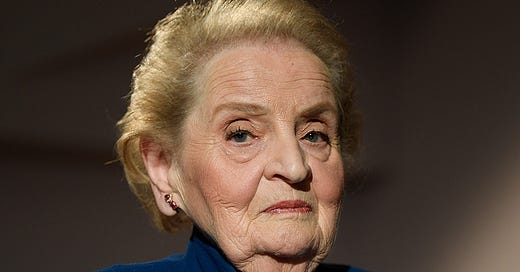






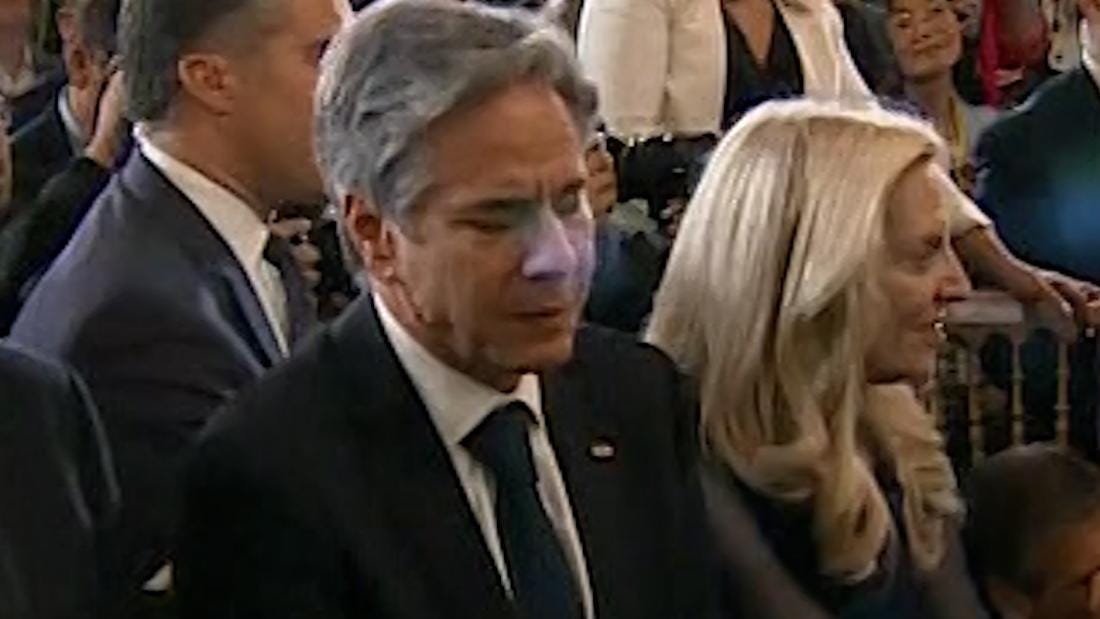


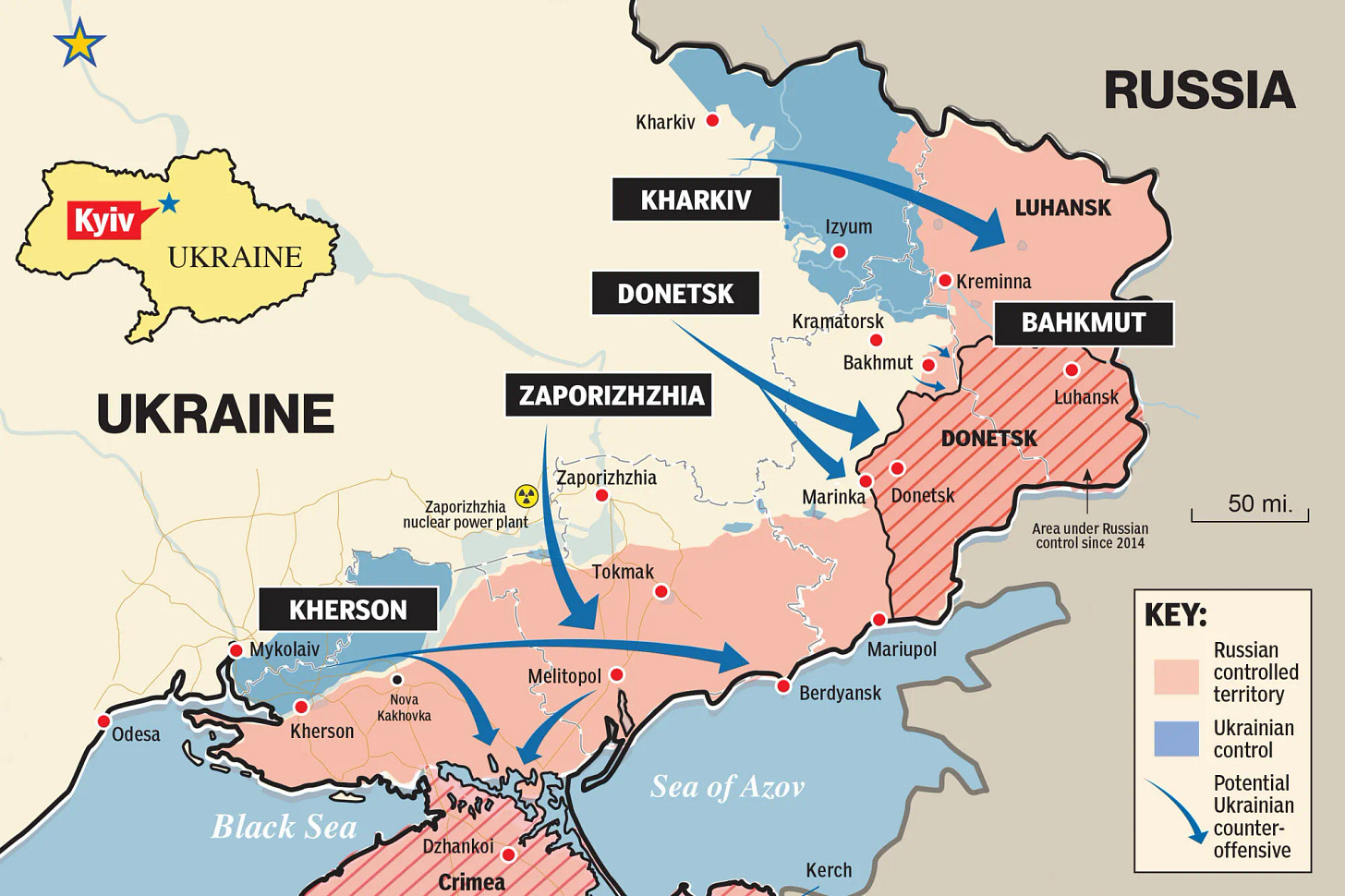

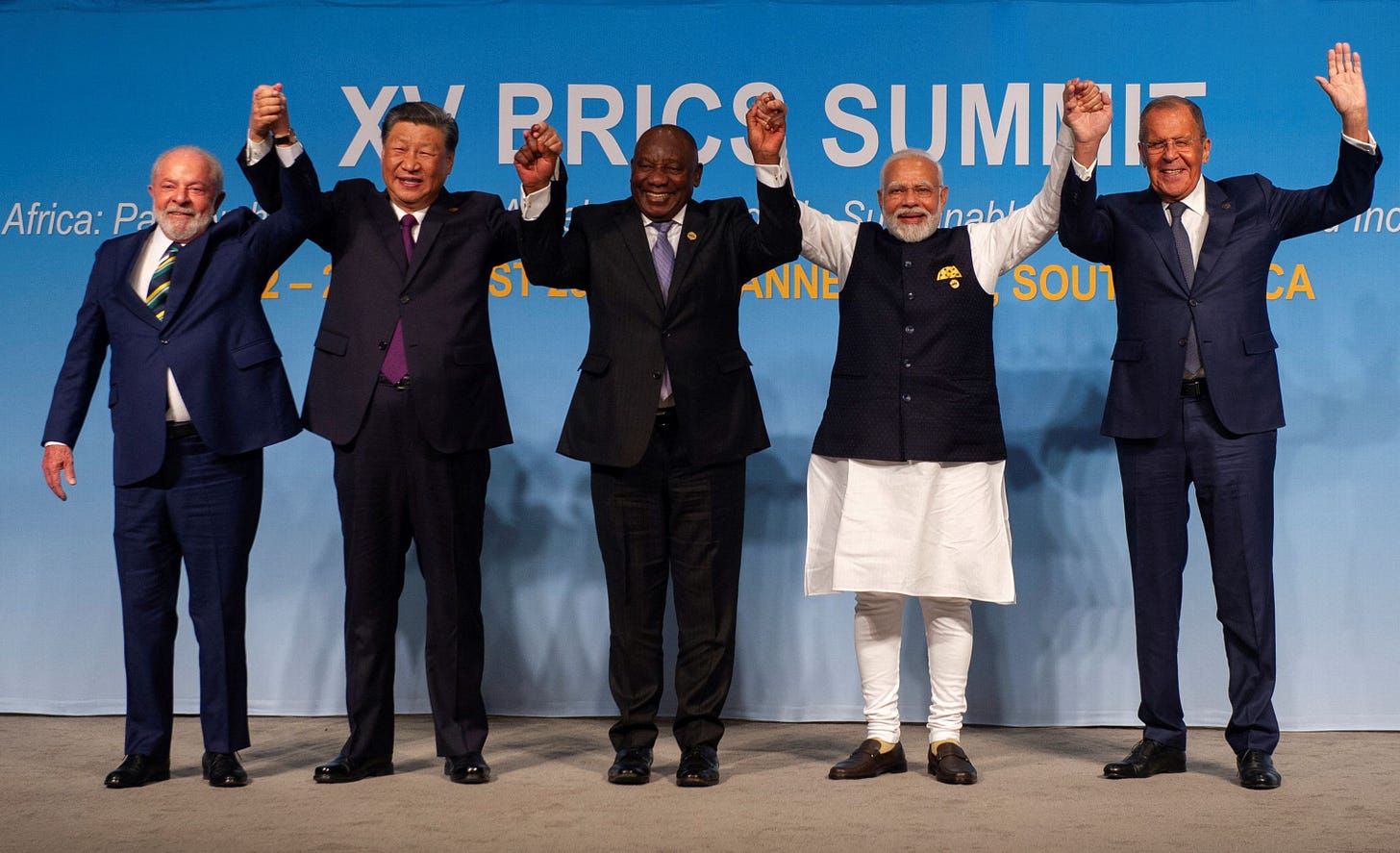
This was a good read. Any attempt to understand how one's adversaries think is always worthwhile. However, it would have been more convincing if (a) it had been proof read to remove numerous grammar and spelling mistakes (such as 'illicit' in place of 'elicit') and (b) had not attempted to claim that its arguments had a “scientific" basis, which is easily dismissed.
I think you should look into the ethnic and ideological background of the original neocons.
Those that don’t fit that background are opportunists who want to wealth and power or useful idiots that share the manifest destiny fantasy of America and that is where their ultimate loyalty lies. Not so for the main ideological, political, and financial drivers behind the scenes.
The neolibs share mostly the same means and goals but use different justifications. Again the same for the background and ultimate goals applies here.